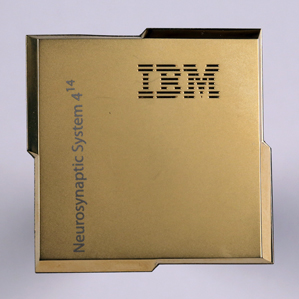August 8, 2014 – The chip is name SyNapse and it uses a million digital equivalents to neurons and 256 million digital equivalents to synapses. It communicates in the same way our brain’s neurons connect and may represent the next leap in neuromorphic computing. IBM revealed details about SyNapse in this month’s Science journal.
The physical structure of the chip is modeled after mammalian brains. Every 250 neurons are organized into 4,096 identical blocks. Data fed in gets processed by repeating circuits. In demonstration SyNapse was able to recognize in real time distinct objects such as people, automobiles and bicycles from the video of a road intersection. A laptop programed to do the identical task took 100 times longer and consumed 100,000 times more power.
IBM intends to connect many thousands of these SyNapse chips to create a supercomputer capable of problem solving the way we humans do. Conventional computing stores data and instructions in separate blocks of memory shuttling back and forth between the two to execute a solution. SyNapse chips don’t require the separation. The neurons and synapses intertwine and individual neurons only fire when they receive instructions from another neuron.
What SyNapse will be able to do only massive parallel computing can accomplish today. But there is a downside. SyNapse will require programmers to master a whole new way of coding. For this IBM has created a suite of code writing tools.












